This post may contain affiliate links, meaning I can earn a small commission from items you purchase (at no cost to you).
Table of contents
Step aside salad. You’re no longer the only way to get leafy green vegetables into our diet. The following nutritional powerhouses deserve a starring role in any kitchen— not just for a trained chef. Packed with vitamins, minerals, and antioxidants, leafy greens offer a wealth of health benefits and surprising versatility in the kitchen.
I started my love affair of leafy greens with blending baby spinach into my smoothies. Over time, I started to crave more leafy green vegetables. From vibrant stir-fries to hearty plant-based soups and even delicious green smoothies, it’s time to look beyond the bowl and discover the exciting world of cooking and blending with leafy greens.
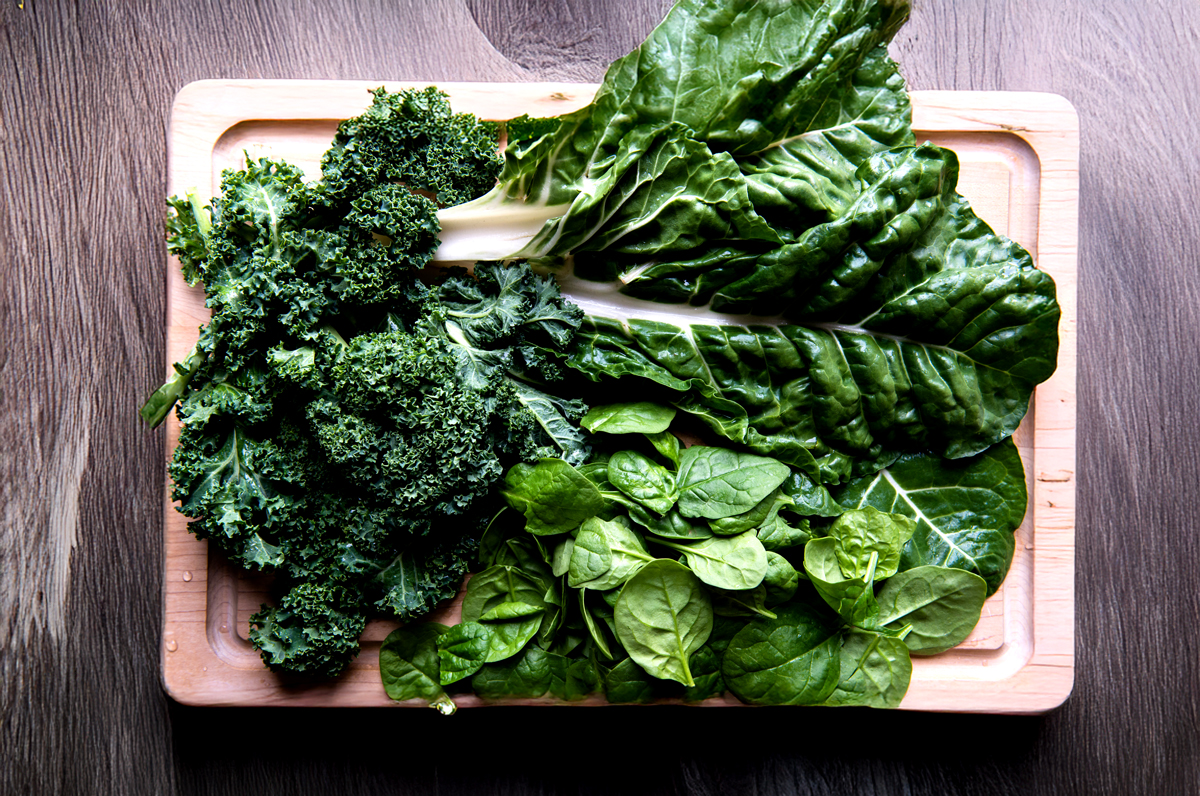
Health Benefits of Leafy Green Vegetables
Leafy greens are super important for a healthy diet. They’re nutrient-dense, green veggies that provide tons of vitamins and minerals. According to a report in the journal Neurology, a daily serving of leafy greens can lead to slower age-related cognitive decline. The term “leafy greens” encompasses a wide array of edible leaves, each with its unique flavor profile and texture. Getting familiar with the leafy green varieties is the first step to unlocking their culinary potential.
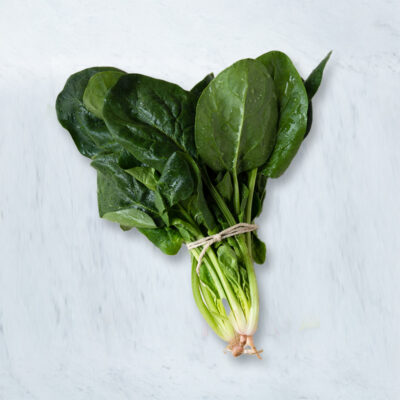
Spinach
Mild & slightly sweet
Spinach is a nutritional powerhouse, packed with vital vitamins (K, A, C), folate, and iron, crucial for bone health, vision, immunity, cell growth, and red blood cell production. Its high antioxidant content and plant compounds may also lower the risk of chronic diseases, making it a valuable addition to a healthy diet.
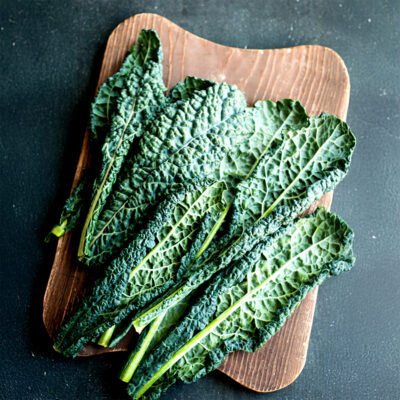
Kale
Hearty & slightly bitter
Kale has different varieties like curly kale, Lacinato (dinosaur) kale, and baby kale offer varying textures. With 684% of the recommended daily value of vitamin K, 206% of the RDV of vitamin A and 134% of the RDV of vitamin C, this dark leafy green packs a health punch.
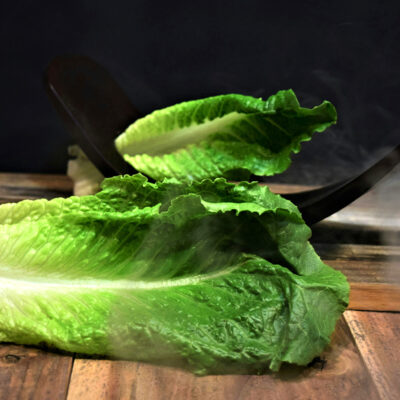
Lettuce (Romaine, Butter, Iceberg)
Mild & slightly sweet
Primarily used raw for salads and wraps, some firmer varieties like romaine can be lightly grilled or braised. Romaine lettuce is high in fiber and low in calories. The vitamin C and beta-carotene content help to lower cholesterol and prevent build-up on artery walls, which reduces the risk of a heart attack.
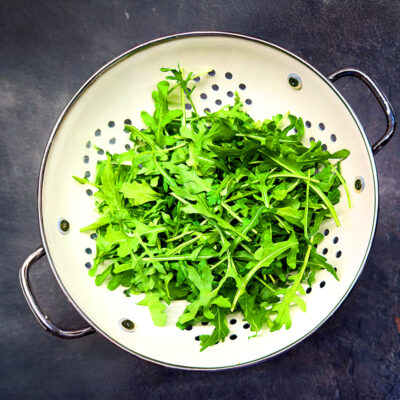
Arugula (Rocket)
Peppery & slightly bitter
Arugula adds a zesty kick to salads and cooked dishes. More than just a garnish, one cup of this leafy green contains 27.7% of the RDV of vitamin K. Tastes best on top of pizza, in a salad or sandwich. I don’t recommend making smoothies with it.
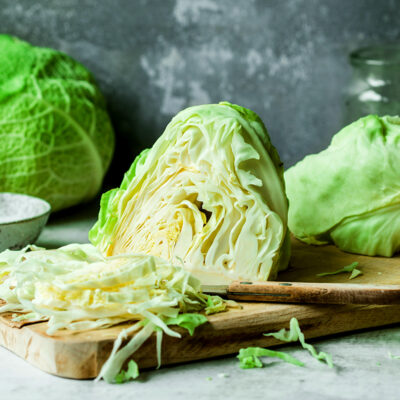
Cabbage
Hearty & pungent
This leafy green can actually be purple, red, white or green, but is definitely still considered a leafy green. I love using cabbage as a plant-based taco shell, blended in a cabbage smoothie or roasted cabbage with light seasoning. Loaded with fiber, folate, vitamin B6 and antioxidants which help fight inflammation.
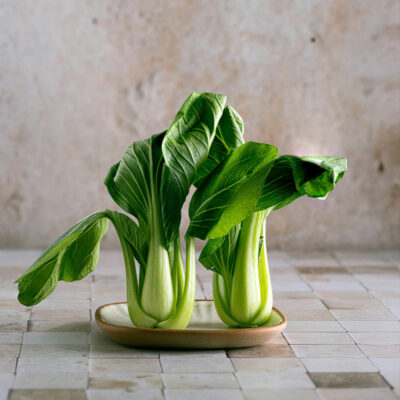
Bok Choy
Mild & slightly sweet
Bok choy is excellent stir-fried, steamed, or added to soups. Full of vitamins A and C, bok choy ranks high for nutrient density as well. All parts of the plant can be used: shredded in a salad, my vegetarian ramen, cooked in soup or blended in a smoothie.
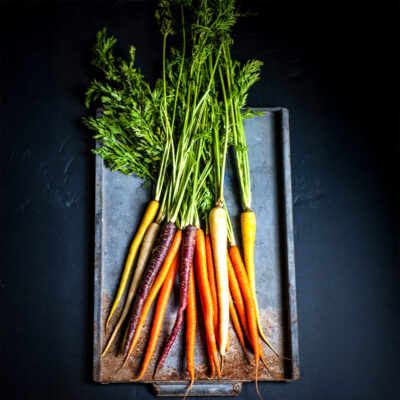
Carrot Greens
Herbaceous & slightly bitter
Carrot tops offer surprising nutrition, providing vitamin K for blood clotting and bones, vitamin C for immunity, and potassium for blood pressure regulation. Their phytonutrients also offer potential anti-inflammatory and antioxidant benefits, making them a worthwhile to smoothies or even pesto!
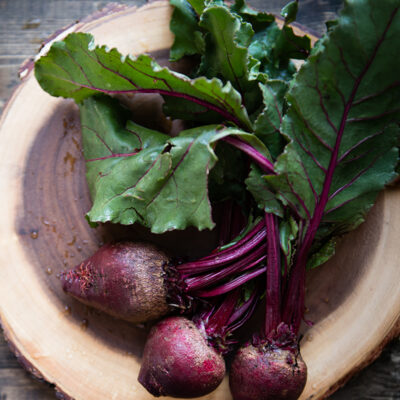
Beet Greens
Slightly earthy
Beet tops are a nutritious leafy green, rich in vitamins K and A, vital for blood clotting, bone health, vision, and immunity. High in phytonutrients, including betalains, beet greens have anti-inflammatory benefits. When blending smoothies with beets, wash and blend in the beet greens.
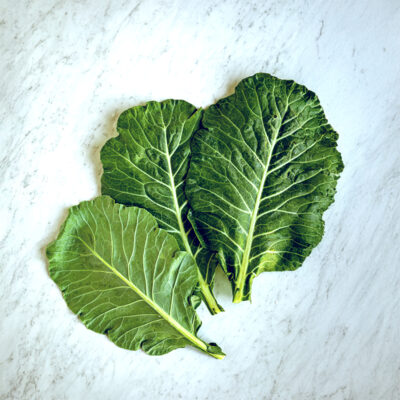
Collard Greens
Tough & slightly bitter
Collard greens benefit from long cooking times. Like their other cruciferous family members, collard greens are great cancer fighters. They are also pretty good at helping your body digest foods properly with all the fiber inside. They are most popular steamed, but adding them raw to your smoothies will provide greater health benefits.

Swiss Chard
Mild & slightly earthy
Mild and slightly earthy with colorful stems that are also edible, Swiss chard is a beautiful and nutritious addition to many dishes. Chard is a colorful, dark leaf known for its ability to regulate the body’s blood sugar. Translation? If diabetes or maintaining blood sugar levels is a concern, add this veggie to your regular rotation.
Leafy Greens Recipes
5 Ways to Use Leafy Greens
Ready to move beyond the traditional salad? Here are some inspiring ways to incorporate more leafy greens into your daily meals:
- Sautéed and stir-fried: Spinach, baby kale, and Swiss chard wilt beautifully in a hot pan with a little olive oil, garlic, and a pinch of salt and pepper. A squeeze of lemon adds brightness. Heartier greens like kale, mustard greens, and bok choy hold up well in stir-fries. Add them towards the end of cooking to maintain some texture and vibrant color. Pair them with your favorite proteins, vegetables, and sauces.
- Soups for warmth and nutrition: Stir in chopped spinach, kale, or Swiss chard during the last few minutes of cooking vegetable soup recipes. They will wilt down and add a boost of nutrients and a touch of freshness. Blend cooked greens like spinach or kale with broth, sautéed onions, and a touch of cream or coconut milk for a smooth and nutritious soup.
- Baked delights with a green twist: Incorporate chopped leafy greens into egg-based dishes like quiches and frittatas. They add color, flavor, and valuable nutrients. Layer sautéed greens into pasta bakes and lasagnas for an extra dose of vegetables. They blend seamlessly with the other ingredients. Add finely chopped cooked greens to roasted root vegetables, or use them as a filling for savory pastries and dumplings.
- Blended goodness in smoothies: Don’t be afraid to toss a handful of spinach or kale into your breakfast smoothie. The flavor is surprisingly mild when combined with fruits, yogurt, and other ingredients.
- Creative raw preparations: While not technically a recipe, juicing leafy greens is a great way to consume a concentrated amount of nutrients. Blend arugula, spinach, or kale with nuts, garlic, olive oil, and lemon juice for a vibrant and flavorful pesto. You can also layer large lettuce leaves like romaine or butter lettuce to create healthy and delicious lettuce wraps and sandwiches.
Benefits of Rotating Leafy Greens
I often talk about rotating your greens when making green smoothies. This is because leafy greens come from all different plant families, each offering different health benefits. Yet if spinach is your jam, no worries! Keep doing that. You can always have a salad with kale or make a soup with Swiss chard.
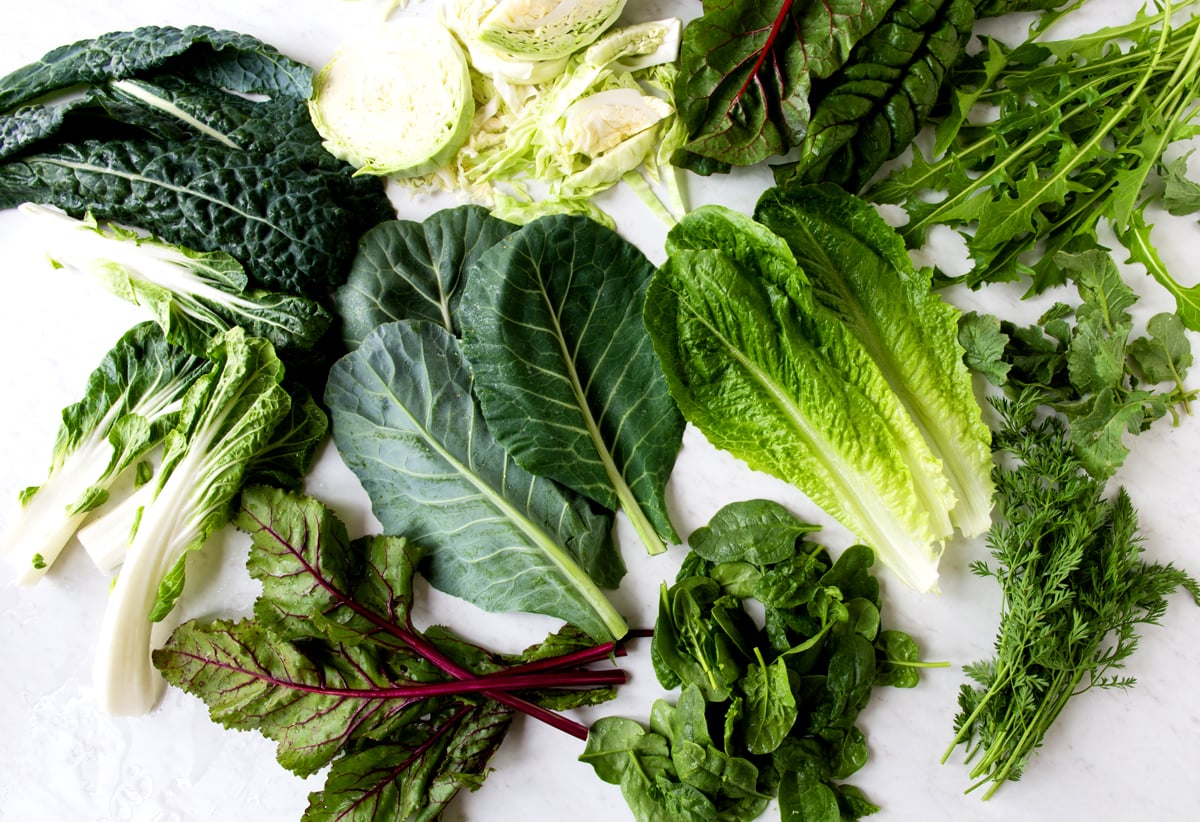
Tips for Cooking with Leafy Green Vegetables
Leafy greens are more than just a salad component. Their versatility and nutritional benefits make them a valuable addition to any healthy diet. By exploring different cooking methods and incorporating them into a variety of dishes, you can unlock a world of flavor and boost your well-being. So, step away from the salad bowl and embrace the green revolution in your kitchen!
- Experiment! Don’t be afraid to try different combinations and cooking methods to discover your favorite ways to enjoy leafy greens.
- Wash thoroughly: Always wash leafy greens thoroughly under cold running water to remove any dirt or grit. A salad spinner can be helpful for drying them.
- Remove tough stems: For heartier greens like kale and collards, remove the tough central stems before cooking.
- Don’t overcook: Most leafy greens cook quickly. Overcooking can make them mushy and reduce their nutritional value.
- Balance flavors: The bitterness of some greens can be balanced with acidic ingredients like lemon juice or vinegar, or by pairing them with sweeter or richer flavors.
What are your favorite leafy greens? Drop a comment below and let me know if this list has inspired you to try a new ingredient, or if you’ve got a new green for me to try!
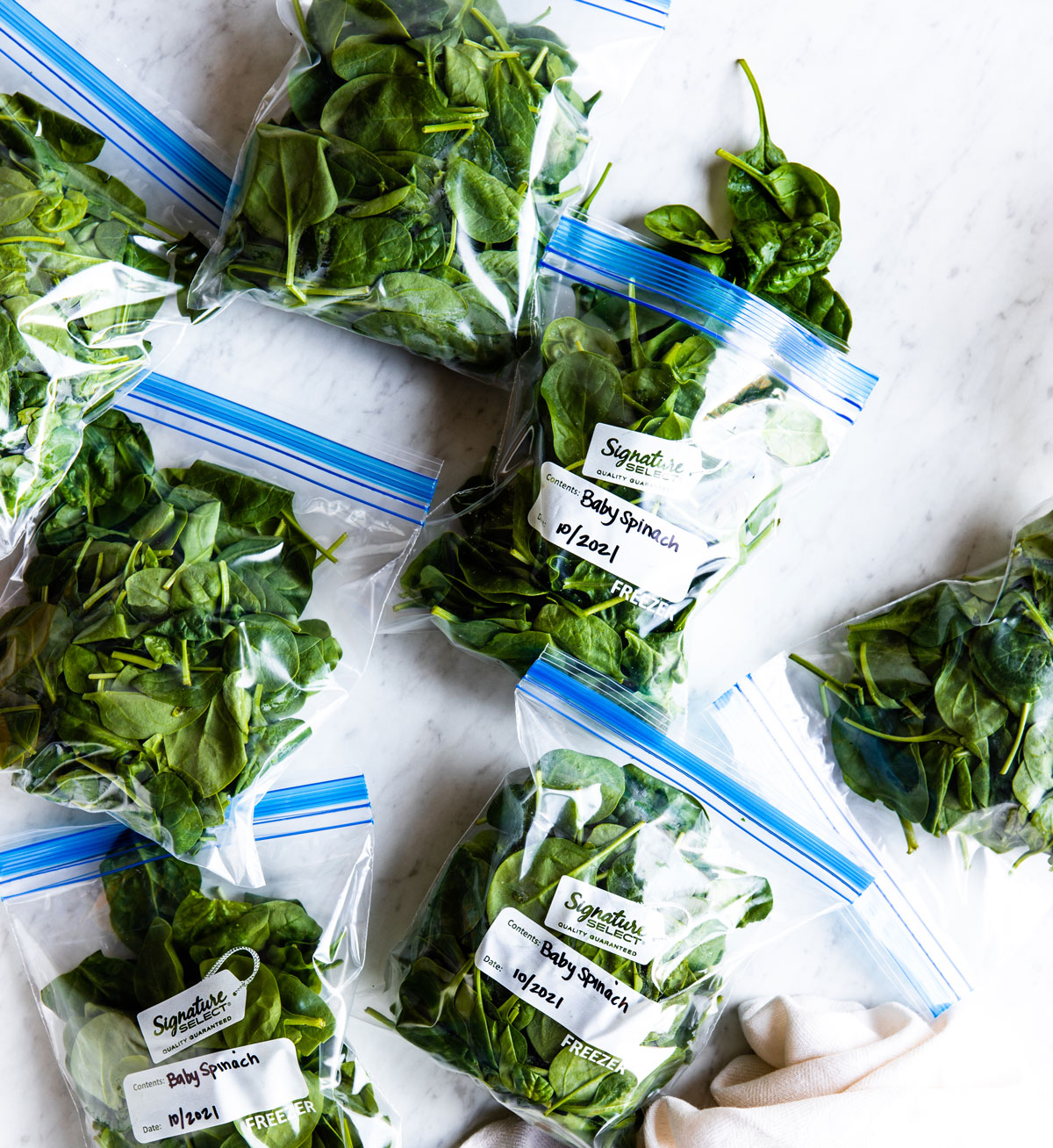
Freezing Your Leafy Greens
Ever wonder how to use up all the beautiful leafy greens you just bought, before they start to wilt? Even though I make green smoothies daily, I sometimes need to freeze my spinach or kale to stay fresh longer.
To lengthen the shelf life of leafy greens and make rotating your greens as easy as opening your freezer, try freezing your spinach. I buy spinach and power greens at Costco— freezing half of it maximizes the freshness.
Common Questions
You’ve probably heard of spinach, kale and lettuce, but leafy greens also include carrot tops, beet greens, swiss chard, arugula and more! They can grow all on their own, or be found on the tops of other plants (like broccoli, beets and carrots).
All leafy greens are incredibly nutritious and great to mix into your diet. Kale and spinach are probably the most nutrient-dense, yet you need a variety of greens (and other fruits and vegetables) for the best health. Don’t be afraid to give a new one a try next time you’re at the store. You might be surprised by mustard greens, bok choy and more!
Greens don’t just take place in salads or garnishes for burgers. You can use them in green smoothies, all kinds of pesto, filling for stuffed mushrooms or potatoes. Pretty much anything you want! Next time you are grocery shopping, grab a new-to-you leafy green and get adventurous with how you prepare it.

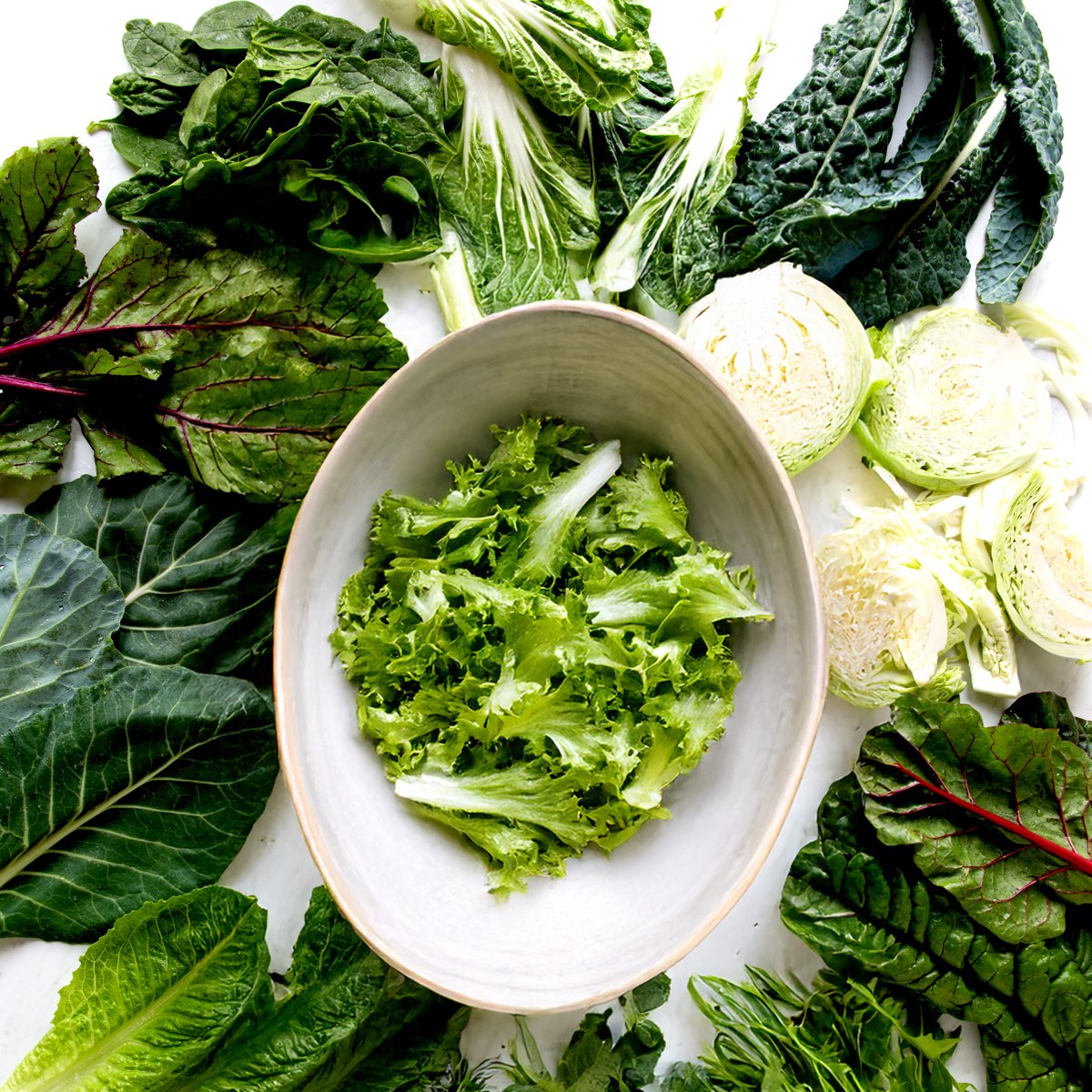

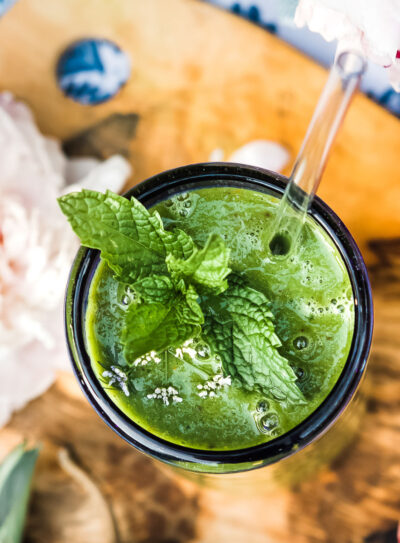
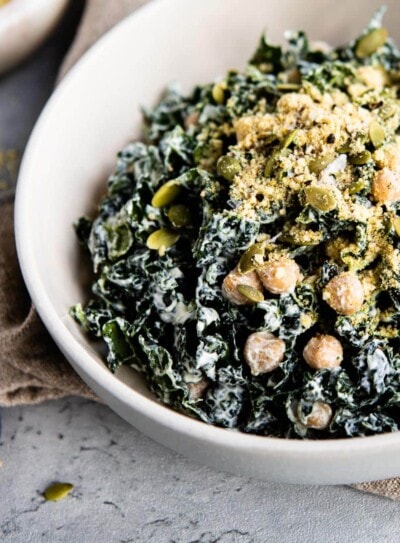

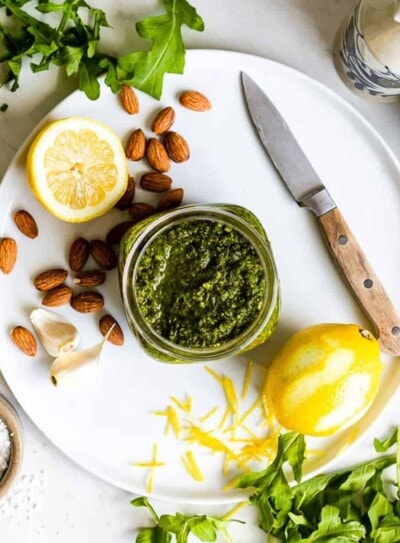
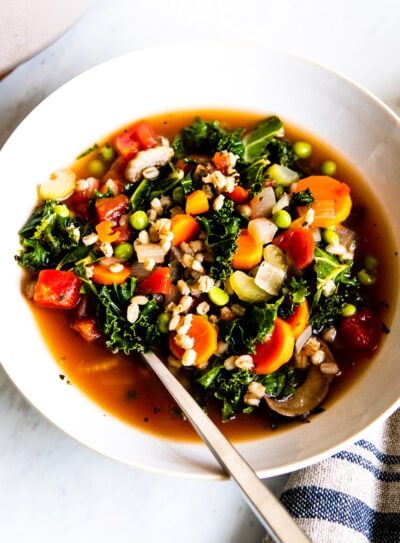

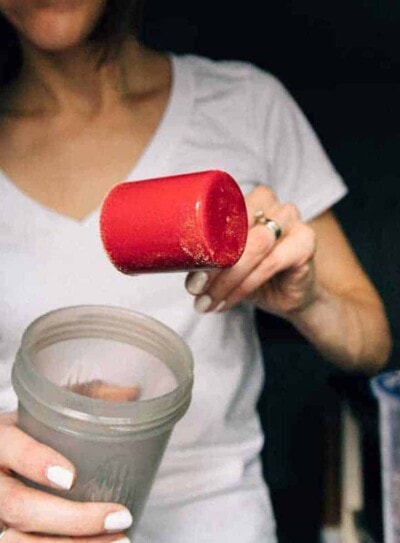
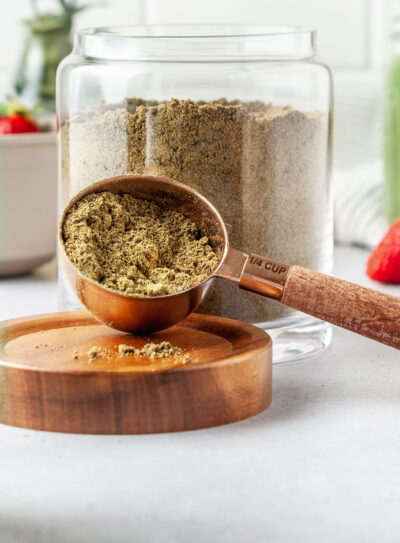

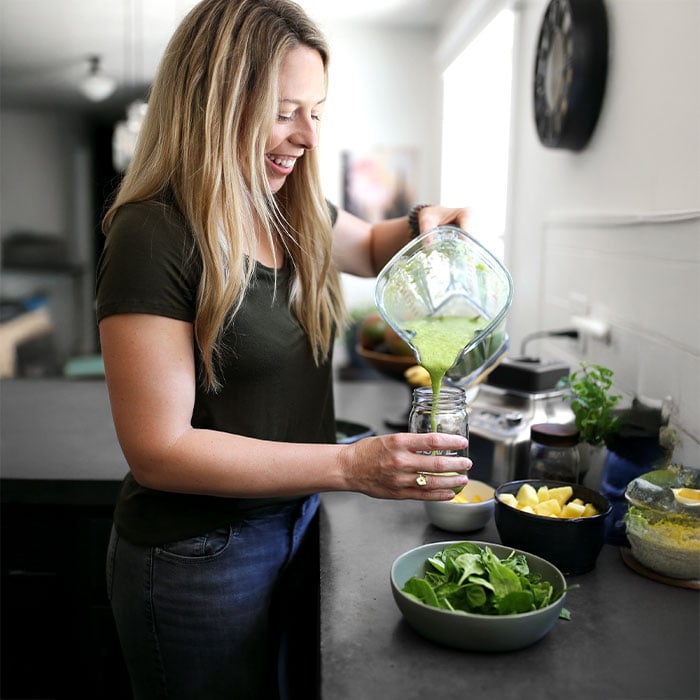









So, if we are supposed to rotate our greens, why, in your 30-day green smoothie challenge, have the first 3 weeks been exclusively kale and spinach? Why haven’t you given us recipes with romaine or bok choy, etc.?
Hi KC!
Great question! Kale and spinach are in different “families” when it comes to leafy greens. Switching back and forth between the two is adequate rotation, but we also use just these two for this challenge because there are lots of new people joining us. We want to ease them into green smoothies, and keep it simple. Feel free to rotate as widely as you’d like!
I can’t have lettuce (I can’t digest it and I get sick). I don’t think I’ve ever had kale before but spinach doesn’t bother me. Is Kale something that I could have an issue with if I have an issue with lettuce?
Not sure, Brittany… Try just a small dose of it before putting large amounts in a smoothie!
I have an issue with lettuce too (so does my brother and mum) but all Crucifers are fine with us 🙂
I use nutribullet and use handful spinach, Apple, cucumber, blueberries, frozen fruit with no added sugar, celery. I also use maca powder and spirilina. Can I use a protein powder and what protein powder do you suggest?
Check out this page, Helen!
https://simplegreensmoothies.com/plant-based-protein-powder
Just a quick question…after doing the green smoothie today I am feeling a little gassy and bloated. Does this go away in time or is there certain Veggies and fruits to watch out for?
Totally normal, Tamela. Just make sure you’re swapping greens often 🙂
Hey! I just started drinking green smoothies a few days ago and I love them so far and already feel more energized! Question — I started freezing my spinach as well, just to keep it longer and add more chill to the smoothie. Is there any reason not to do this? Thanks!
We love freezing our greens. No sense in spoiling them!
Do you have any suggestions for low calorie, good tasting smoothies!
Hi Cheryl!
Not sure about low calorie… We aren’t big fans of calorie counting. We’d rather focus on all the positive nutrients we’re adding to our bodies 🙂
I was wondering about Turnip greens? Is there a reason you left them out of your greens?
Not really 🙂 There are so many fantastic greens that we didn’t add, but we couldn’t list everything. Turnip greens are great!
what family would turnip greens be in? What is your source for finding ‘family’ and nutrient information. I would really like to have that kind of resource.
I am really happy to know about ‘beet greens’ having tryptophan, my husband has a very hard time sleeping. He wakes up several times a night. About a year ago I was going crazy trying to find a source of tryptophan I finally gave up. Do you have any other sources besides turkey. this is the first time I’ve been to your website, you have great information. Thanks so much.
This reply is to Sheri (for some reason the respond button isn’t showing on your post)
Turnip greens are in the Cruciferous family. To find out what family a veg is in, you have to look up it’s Latin species name, then the genus and it’s other classifications. Amazingly, kale, collard greens, cauliflower, cabbage, broccoli, Brussels sprouts, calabrese, kohlrabi and turnips are different varieties of exactly the same species, Brassica oleracea. They’ve just been bred to have different shaped leaves, different shaped stems, edible unopened flower buds (that’s what you’re eating when you eat broccoli or cauliflower) or big edible roots.
From the highest to the lowest, apricots, raisins, lychees, avocados, prunes, persimmons, all sapote varieties, guavas, figs, kiwi, plantains, peaches, elderberries, apples, dates, grapes, bananas, cherries, oranges, grapefuit, plums and starfruit are all fruit sources of tryptophan.
Vegetable sources: soya beans and stuff made from them, peppers, chives, shallots, onions, leeks (the last four are the Allium family – see if you can guess other members!) – tomatoes, potatoes, butter beans, cow peas, haricot beans, mung beans, broadbeans, kidney beans – all beans basically, turnip greens, mushrooms, parsley, broccoli, laver (Atlantic nori), Brussel sprouts, pumpkin leaves, beet greens, cauliflower, kale and all other Brassica oleracea varients, spinach and sweet potatoes.
All the vegetable sources are much higher than the fruit sources, especially the beans and the alliums. If he’s a raw foodie, he could try eating sprouted beans 😀
May one use the baby greens or is the mature green preferable?
You can use either, Rachel 🙂
Hi there,
You talk about rotating, but for the last seven months I have been using most of the leafy greens you mention, every day in my lunchtime “Green Goo” as I call it. This has been a Juice rather than a Smoothie, but lately I have been combining the two, by liquidizing the spinach to get the full affect of its awesomeness, and then adding it to the Juice of the other items. One question…our local farmer is growing Rape – the leaves of which are from the cabbage family. Would they be ok to put in my daily Green Goo?
HI Kaz, We’re totally not sure about the juicing parts as neither Jen or myself (Jadah) juice. We do rotate our greens regularly so you might want to try doing that as well. 🙂
Rape leaves will be edible, but only before the plant has started trying to flower – after that they will very bitter
What part of romaine can be used? I used chopped romaine from a bag today and had to strain the smoothie to make it drinkable. I’m wondering if that is because there was not enough leaf and too much towards the bottom of the romaine.
Hi Andrea!
It really comes down to personal preference and blender type. Some blenders may have a harder time blending the stalk, and that’s ok! This just means that you should use more of the leaves and less of the stalk. Also, if you don’t like the bitter taste of the stalk, then you should use less of it 🙂 Hope this helps!
How many cups of leafy greens should one consume daily?? How much is too much on a daily bases? I drink a whole blender full a day with Spinach and Kale and like, 15 different fruits….plus herbs and spices
Hi!
It really varies for each person. We are content with drinking one green smoothie a day, which is about 1 cup of leafy greens. Some people would do well to drink 2 or 3 a day, too.
Do you peel mangos? What other fruits do you peel or not peel?
Yes, we peel mangoes 🙂
Just wanted to comment that I developed some seriously large kidney stones from high oxalate foods. I was juicing quite a bit before that. My urologist did blood work and urine and stone analysis. We discovered that the juicing is likely causing the stones to develop. Anything with an oxalate level over 50mg. should be strictly limited: Collards-74mg, Spinach-600mg, Beet root-675, Swiss Chard-645. anything under 50mg. should be limited to 4 oz per day. Celery- 20mg, Kale-13 mg. I still want to juice and was looking for alternative greens to juice. Thanks for the ideas, I will try arugala, cabbage, bok choy, romaine lettuce, cilantro and carrot tops.
Hi Andrea! Thanks for sharing this with us! One thing to keep in mind is that we focus primarily on blending, and not juicing. Blending requires you to use a smaller amount of leafy greens than juicing does because you use the whole leaf. This helps to reduce the oxalate levels 🙂 Again, thank you for sharing your story!
Oxalates do not cause kidney stones. The only thing that has been found to cause kidney stones is meat. No study has ever shown oxalates to cause kidney stones, much to the meat industry’s chagrin. In fact, fruits and vegetables create urinary citrates which have been proven to reduce the risk of kidney stones, with vegetables having an even stronger effect than fruit. If you have kidney stones it’s either a) because you eat meat, or b) because you’ve only recently given up eating meat. He’s trying to convince you to stop eating vegetables because without out them you’re more likely to develop stone again, thus more money for him. Also, doing stone analysis sound like quackery – all stones are made out of calcium oxalate.
On Nov. 4, 2013 you commented that you could replace plain water with green tea in a smoothie. Is it OK to use a cup of plain water and just use a 1/2 to 1 tsp. of dried green tea in the smoothie? Will you receive the same “goodness” of a cup of green tea, that has not been hydrated in hot water?
Sounds like it could work to me!
Great article on the greens. Any recommendation on what types of fruits to mix with the non spinach options? What can I blend with cilantro? arugula? or beet greens? Thank you for this site. =)
Citrus-y fruits work really well with cilantro! We don’t use arugula much…. But beet greens work well with lots of root veggies 🙂
I am trying to start adding a green smoothie to my daily diet. However, I’m allergic to coconut and so many of the recipes are enhanced with some form of coconut. Is there a viable alternative that’s affordable and easy to find?
Hi Danielle:
Coconut milk? Almond milk works great.
Coconut water? What about regular water or green tea as a replacement?
Coconut oil? Try using a similar portion of avocado.
Hope this helps!